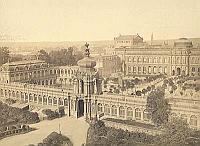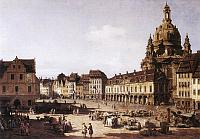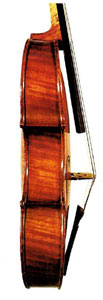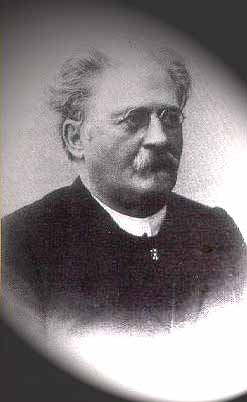Felix Draeseke: Sonatas for Viola and Piano
| Viola Sonata No. 1 in C Minor, WoO 21 |
|||
During his career Draeseke divided his efforts almost equally among compositional realms. Already with his early (and only) Piano Sonata in C# minor (Sonata quasi Fantasia) of 1862-7 he aroused major interest, winning Liszt's unreserved admiration of it as one of the most important piano sonatas after Beethoven. His operas "Herrat" (1879, originally "Dietrich von Bern") and "Gudrun" (1884, after the medieval epic of the same name) met with some success, but their subsequent neglect has kept posterity from understanding Draeseke as one of the few true successors to Wagner and one of the very few who could conceive dramatically convincing and musically compelling examples of "Gesamtkunstwerk". A master contrapuntist, Draeseke reveled in writing choral music, achieving major success with his B minor Requiem of 1877-80, but nowhere proving more convincingly his powers in this direction than in the staggering Mysterium "Christus" which is comprised of a prolog and three separate oratorios and requires three days for a complete performance, a work which occupied him between the years 1894-9 but whose conception reaches back to the 1860s. Of all the symphonies from the second half of the 19th century which are today neglected, Draeseke's "Symphonia Tragica" (Symphony No. 3 in C major, Op.40) is one of the very few which deserves repertory status alongside the symphonies of Brahms and Bruckner, a masterful fusion of intellect and emotion, of form and content. Orchestral works like the Serenade in F major, Op. 49 (1888) or its companion of the same year, the symphonic prelude after Kleist, "Penthesilea", have in them all that is declared necessary for audience success: rich melodic invention, rhythmic vivacity and extraordinary harmonic conception. Draeseke's production was equally rich in chamber music and there in recent years the composer has perhaps attracted the most immediate attention, if primarily because of the performance forces required. Reissues of the scores and parts to the B flat major Clarinet Sonata (1887), the E minor String Quartet (No. 2, 1887 as well) and the F major String Quintet (Op. 77 of 1900, featuring two 'celli ) have been performed worldwide. An ever widening audience seems to be developing for Draeseke at last and the phenomenon is based on perception of individuality, inventiveness and stylistic integrity, music which truly rewards attention. Throughout his career Draeseke was keenly aware of developments in all facets of music and in his chamber music output one sees a number of endorsements of new instruments, among them the violotta, an instrument invented by Alfred Stelzner and described as a "tenor viola", which Draeseke incorporated into his never published Quintet in A major for Two Violins, Viola, Violotta and Cello of 1897, WoO 25. Of even greater consequence for Draeseke was the attention he gave to the viola alta, an instrument developed in the 1870s by Hermann Ritter and one which had earned endorsement by such figures as Richard Wagner and Engelbert Humperdinck for preference in the Bayreuth orchestra. Though other composers at the turn of this century were attracted to the viola alta (Richard Strauss, Pfitzner, Von Schillings, etc.) it was rarely (if ever) called for explicitly in an orchestral score. Ritter's viola alta distinguished itself from the viola of the time by its extended body and rounded top.Its design was supposed to lessen the often nasal quality of the contemporary viola and make possible a fuller, smoother tone; a later version of the viola alta even incorporated a fifth string (E). Despite Ritter's continual efforts on behalf of his instrument, even composing works for it himself (primarily quartets for four together), the viola alta has become an anomaly in the history of instruments. Whatever advantages the instrument had were offset by awkwardness in execution and later developments in viola construction. Specific use of the viola alta is found primarily in chamber music and of those composers who wrote for it with its characteristics in mind, Felix Draeseke was both the most prominent and most successful. Would Draeseke have written sonatas for the normal viola of the times? That answer is contained in a letter to the Pforzheim theatre director Theodor Roehmeyer, a friend of both the composer and the designer of the viola alta, Hermann Ritter, dated 12 December 1904, which is quoted on page 120 of Volume 3 of the publications of the International Draeseke Society where Draeseke states:
Be that as it may, Draeseke's sonatas are as well served by today's violas (and many of yesteryear's) as by Ritter's; certainly Draeseke, despite his endorsement, realized that future performances of his two sonatas would not necessarily involve the Ritter prototype. Questions of instrumentation did not prevent Draeseke's two sonatas for viola alta and piano from making their way. Each had the misfortune to fall prey to an element which can be described as none other than bad luck. Draeseke's Sonata No. 1 in C minor for Viola alta and Piano (WoO 21) dates from 1892 and was written for a friend at the Dresden Conservatory, the violist Rudolf Remmele, a champion of Ritter's viola alta. The sonata scored a resounding success at its premiere in October, 1893 and was set for publication by the firm Kistner, which had published other compositions of Draeseke. When Kistner sent Draeseke the proofs for publication, Draeseke became incensed at the remark on the title page, "Eigentum des Verlegers, alle An even stranger destiny awaited the Sonata No. 2 in F major for Viola alta and Piano (WoO 26) of Draeseke. Almost a decade after finishing the first viola alta sonata Draeseke was approached by the previously mentioned viola alta enthusiast Theodor Roehmeyer, who requested a new extended work for the instrument. In a period little less than a month, 13 December 1901 to 11 January 1902, Draeseke had completed his second sonata for viola alta and piano. In his study of the composer, Erich Roeder writes the following concerning the work:
Roeder's comment concerning Ritter is conjecture and he makes no references to published criticism or any other commentary about the work after its first performance. More problematic is Roeder's claim that during his lifetime Draeseke never got back the manuscript materials. Draeseke finished his memoirs, Lebenserinnerungen, with the year 1911; they were dictated to his wife who wrote them out by hand. They have never been published but his one time pupil Hermann Stephani edited them in typescript during the 1930's and that typescript is presently in the Coburg city archives under the catalog entry, Coburgica No. XI. 30. In reference to the year 1901 Draeseke reports:
The question therefore arises whether Draeseke actually received his manuscript back before his death or not.
SONATA NO. 1 in C minor for VIOLA and PIANO, WoO 21 Though the movement is marked Moderato elegiaco, the opening motive seems to contain in itself elements of dramatic pathos: presented embedded in six notes of double stops, it attempts three times to free itself from the envelopment before finding its single line expression, where after the piano takes it over for harmonic development. Developmental motives appear in the transition to the presentation of the secondary lyrical theme and at the conclusion of the exposition of this theme a major motive consisting of four 16th notes and a sequence of a dotted 8th note rhythm is introduced. When the viola presents The second movement Larghetto is perhaps the heart of the sonata. An extended melody wends its way with intimations of almost religious piety, the harmonic progressions lending piquant touches that deny the listener common expectation until, settling once again in the home tonality of F major, the second theme is heard. The presentation of this theme (pp., grazioso) brings to the music a sense of great intimacy, emphasized by the fact that it is presented in softly pulsating double stops, with a flowing motion of triplet 16th notes. The development of these two themes seems almost an exercise in free fantasy, though the basic concept underlying it is clear: the composer juxtaposes duplet elements of the first theme with triplet elements of the second, exchanging them in various registers of the two instruments and recombining them, all with the utmost beauty of harmonization. The reprise is brief and its quiet ending is almost a mirror of the gesture which ends the preceding movement. In his observations concerning the Allegretto finale, Erich Roeder warns against a tempo that might be too fast - on regular viola or viola alta - for the basically comfortable nature of the opening rondo theme. The theme is almost commonplace when it enters but then Draeseke's genial stamp takes over as passing notes and agogic displacements intrude and the theme undergoes chameleon like alterations. The form of the movement is extended rondo form, that is, rondo with elements of sonata allegro. A second theme, more lyrical in expression, is introduced and given development. Erich Roeder finds the theme a relative of the melody of Draeseke's song "Abendreih'n", Op. 17, No.1, this writer recognizes in it a relationship to the grand lyrical theme in the finale of the composer's Symphony No. 2 in F major, Op. 25. The return of the rondo theme introduces a syncopated figure in the piano to aid the progress of diversity, whereupon the key of E major is reached and a new lyrical theme is introduced and briefly developed. Harmonic agitation and use of the viola's higher register add a certain dramatic coloration to the progress of the movement while eruptive chords from the viola subside to a return of the rondo theme, now almost manic in its insistence. A forceful and brief ritenuto leads to a wild stretto which culminates in an heroic dramatic gesture, after which the viola (un poco piu largo) falls to its lowest note (via the only triplet in the entire movement) and rises to conclude the work in a violent affirmation of C minor. SONATA NO. 2 in F major for VIOLA and PIANO, WoO 26 The second of Draeseke's sonatas for viola alta and piano stands in contrast to its predecessor in several ways: 1.) it is cast in a major tonality; 2.) it is shorter in duration; 3.) all of the movements end quietly, and 4.) there is use of thematic recall, which stamps it with a major characteristic of Romantic or 19th century formal outlook. In regard to this the first viola sonata is completely classical with its three thematically unrelated and contrasting movements. Erich Roeder saw in the music what he perceived to be passing references to material from other Draeseke works, notably from the Symphonia Tragica and "Christus". Despite its major tonality the F major sonata is suffused with a melancholy lyricism whose impulse seems to stem from the ideal of "unendliche Melodie", or unending melody. As the first movement begins there is an immediate example for these observations. After a single measure's introduction the listener experiences a wonder of melodic construction: a simple upward scale progression is treated sequentially downward with an unexpected harmonic twist from As in the first sonata the heart of work seems to be the second movement (Langsam und gewichtig). Its minor mode tinges the music with elegiac sadness but also provides a tone of almost heroic defiance in climactic moments. The viola presents the main theme of the movement immediately, a theme constructed of two four measure elements. A contrasting side theme in B flat, flowing and rhapsodic, leads to the movement's second major theme, "sehr innig und warm", marked by Draeseke's peculiarly individual harmonic sense. With the return of the movement's main theme the composer begins a series of variants of his thematic materials, fiery, playful, explosive, graceful until A minor is firmly re-established and the movement reaches its radiant climax featuring the main theme, which is broken off abruptly with a reference to the second major theme. As the movement dies away to its pianissimo conclusion, fragments of the main theme are discernible. The finale, Maessig bewegt, begins in the parallel tonality of the sonata's home key of F major, D minor, and with a main theme similar in its playful motoric elements to the main motive in the finale of the first viola sonata. One may view the movement as extended rondo form: Part A brings extended development of the beginning theme; Part B unveils a lyrically longing melody in related D major which is likewise broadly developed. Part A returns briefly only to give way to Part C which introduces a new theme and this theme seems clearly related in its outlines to an important developmental motive (triplet and dotted rhythm) of the first movement. The theme is introduced softly and lightly and is used but briefly before A returns, but rising intensity allows the C theme its full manifestation. A playful fugato ensues, the end of which is announced by the reappearance of A; with a placid transition to F major. A repetition of Part B ensues with its wonderful lyrical melody. With the reappearance of A one expects the conclusion of the movement but Draeseke surprises his listener once again and breaks off the repetition abruptly. Solemnly and with inner intensity the second major theme of the slow movement is heard again (G flat major). The A theme of the rondo tries to rally itself gracefully but it succumbs to the soft and steady ebbing of sound which is the coda of the movement, and the conclusion of this masterful sonata by Felix Draeseke. The scores and parts to both sonatas for viola and piano by Felix Draeseke have been issued by Wollenweber Verlag, Munich Graefelfin Germany. © Alan Krueck 2003
|
|||
| Draeseke's Sonatas for Viola and Piano on CD | |||
|
|||
[Chamber Music] [Orchestral Music] [Keyboard Music] [Top]
© All contents copyright by the International Draeseke Society
 Rechte vorbehalten; (Property of the publisher, all rights reserved)," since that was not what he had negotiated. Time passed and, for whichever reasons, Draeseke never found a publisher for the sonata, despite the fact that musicians knew about the work and seems to have been performed a number of times before the composer's death in 1913, most notably at a
Rechte vorbehalten; (Property of the publisher, all rights reserved)," since that was not what he had negotiated. Time passed and, for whichever reasons, Draeseke never found a publisher for the sonata, despite the fact that musicians knew about the work and seems to have been performed a number of times before the composer's death in 1913, most notably at a  The information following the colon in the above quotation and set off with a cross is actually a footnote in the Coburg typescript, entered with the indication that it should replace a crossed out (and totally undecipherable) word which follows the colon. If Draeseke had gotten back the F major sonata which he had considered "lost for eight years" after its premiere in 1904, then the year would have been 1912 and he would indeed still have been alive. However, if the entry refers to a "return home" eight years after Draeseke's death, the year would be 1921 and that would agree with Roeder's assertion: on the title page of the manuscript of the F major sonata which is housed in the Saxon State Library, Dresden, one reads an entrance for the City Library of Dresden, Noten 841 (1921-19 22: 436). Mueller Reuter had died in 1919; had the sonata been found among his holdings and then returned to Draeseke's widow in 1921? If Draeseke had the score in the last year of his life, there is no correspondence regarding the matter. Whatever the reality, the F major viola alta sonata slumbered in the Saxon State Library until 1993, when the present writer examined it and determined to bring about its publication. In conjunction with the Italian violist Franco Sciannameo and the American pianist and musicologist William James Lawson, an editorial team was set up and the F major viola alta sonata was edited for performance and publication. Heartfelt gratitude is herewith expressed for the efficiency and kindness of the librarians in the music division of the Saxon State Library, Dresden, without whose assistance the undertaking would not have been possible.
The information following the colon in the above quotation and set off with a cross is actually a footnote in the Coburg typescript, entered with the indication that it should replace a crossed out (and totally undecipherable) word which follows the colon. If Draeseke had gotten back the F major sonata which he had considered "lost for eight years" after its premiere in 1904, then the year would have been 1912 and he would indeed still have been alive. However, if the entry refers to a "return home" eight years after Draeseke's death, the year would be 1921 and that would agree with Roeder's assertion: on the title page of the manuscript of the F major sonata which is housed in the Saxon State Library, Dresden, one reads an entrance for the City Library of Dresden, Noten 841 (1921-19 22: 436). Mueller Reuter had died in 1919; had the sonata been found among his holdings and then returned to Draeseke's widow in 1921? If Draeseke had the score in the last year of his life, there is no correspondence regarding the matter. Whatever the reality, the F major viola alta sonata slumbered in the Saxon State Library until 1993, when the present writer examined it and determined to bring about its publication. In conjunction with the Italian violist Franco Sciannameo and the American pianist and musicologist William James Lawson, an editorial team was set up and the F major viola alta sonata was edited for performance and publication. Heartfelt gratitude is herewith expressed for the efficiency and kindness of the librarians in the music division of the Saxon State Library, Dresden, without whose assistance the undertaking would not have been possible. On 15 November 1994, in a recital by Franco Sciannameo and William James Lawson on the campus of California University of Pennsylvania, the Sonata No. 2 in F major for Viola alta and Piano, WoO 26, by Felix Draeseke was heard for the first time since 1904. On the program was the composer's Sonata No. 1 in C minor for Viola alta and Piano, WoO 21 as well, the first time the two sonatas had ever been performed together. In the spring of 1996 the Wollenweber Verlag, Munich-Graefelfing issued Draeseke's Second Viola alta Sonata under the general editorship of William James Lawson in its first publication.
On 15 November 1994, in a recital by Franco Sciannameo and William James Lawson on the campus of California University of Pennsylvania, the Sonata No. 2 in F major for Viola alta and Piano, WoO 26, by Felix Draeseke was heard for the first time since 1904. On the program was the composer's Sonata No. 1 in C minor for Viola alta and Piano, WoO 21 as well, the first time the two sonatas had ever been performed together. In the spring of 1996 the Wollenweber Verlag, Munich-Graefelfing issued Draeseke's Second Viola alta Sonata under the general editorship of William James Lawson in its first publication. the secondary lyrical theme harmonized in thirds (there follows an obligatory repeat of the exposition), C minor returns and with it the beginning of the development. All the major and developmental motives are employed but the intricacies of relationships require far more space than can be allowed here. What is apparent even on first hearing is Draeseke's consummate mastery of counterpoint and his startling, idiosyncratic understanding of harmonic relationships: the two combined resulting in great tension and drama. After this the reprise seems at first traditional but the composer throws in a few surprises along the way including a coda disturbing in its quietude.
the secondary lyrical theme harmonized in thirds (there follows an obligatory repeat of the exposition), C minor returns and with it the beginning of the development. All the major and developmental motives are employed but the intricacies of relationships require far more space than can be allowed here. What is apparent even on first hearing is Draeseke's consummate mastery of counterpoint and his startling, idiosyncratic understanding of harmonic relationships: the two combined resulting in great tension and drama. After this the reprise seems at first traditional but the composer throws in a few surprises along the way including a coda disturbing in its quietude.  F major to G minor and from this blossoms unforgettable pathos. A secondary theme is introduced in a similar manner via a simple scale passage, this time downward, but featuring an emotionally disturbing falling fifth at its conclusion. A rhythmically propulsive developmental motive is introduced to lead the music to strange quarter note triplets which are the basis for the soaring, yearning song which is the third main theme. All these materials are combined and treated in the expected development, but in a manner characterized by the harmonic disquietude and daring contrapuntal maneuvers which define Draeseke's art. The reprise is no mere repetition of the beginning and establishes its own coloration; the very end of the movement is one of resignation.
F major to G minor and from this blossoms unforgettable pathos. A secondary theme is introduced in a similar manner via a simple scale passage, this time downward, but featuring an emotionally disturbing falling fifth at its conclusion. A rhythmically propulsive developmental motive is introduced to lead the music to strange quarter note triplets which are the basis for the soaring, yearning song which is the third main theme. All these materials are combined and treated in the expected development, but in a manner characterized by the harmonic disquietude and daring contrapuntal maneuvers which define Draeseke's art. The reprise is no mere repetition of the beginning and establishes its own coloration; the very end of the movement is one of resignation.